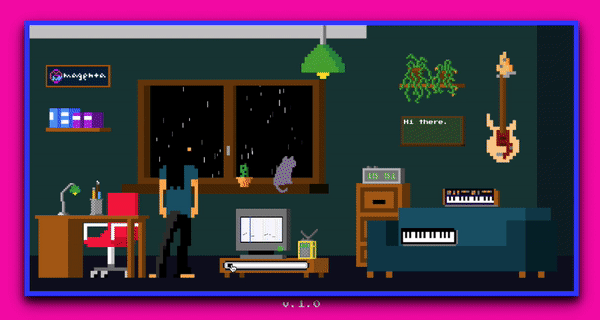
This could be part of the reason why lo-fi house was regarded as a fad when it first started out. But what this tends to be perceived as is artists who don’t take their craft seriously, which leads to critics and listeners not taking the music seriously, thus nurturing a dismissive attitude towards the genre. Personally, I think is hilarious and it’s lovely to see artist who don’t outright take names seriously. I’m talking about monikers like DJ Poolboi, DJ Sports, DJ Bus Replacement Service, and of course DJ Boring. Lo-Fi House ArtistsĪpart from the individual brilliance of artists, something which also heightened the popularity of Lo-Fi House was the commotion surrounding the ‘peculiar’ artist names in the scene. Even though there isn’t a distinct genesis that we can pinpoint, there are murmurs that lo-fi house arose out of defiance – a defiance of the gloss laden all throughout various forms of contemporary house but in the shape of murky machine warmth. Something to keep in mind is that the genre is a web-based phenomenon that started online and gradually leaked into the streets, bars, and clubs due to its internet virility. That’s a quote from lo-fi house extraordinaire Ross from Friends in an interview with Bandcamp, ultimately representing the fascination that some lo-fi house artists have for old school house to the point of emulation through their own craft. Everything’s very crushed and compressed.” “I do it because I’ve gained a real love for the old school sound, where it really just sounds worn-out and knackered, and it’s got a lot of character. If you listen to some of the earliest house tracks such as the one below, the similarities between the house of yesteryears and contemporary lo-fi house are quite evident. The fascinating thing of lo-fi hip hop and lo-fi house both gaining momentum around the late 2010s, is the fact that hip hop and house respectively started off as lo-fi. Overall this gives bystanders the impression of a movement which deliberately doesn’t take itself too seriously – something we’ll delve into in the coming sections.

The attitude propelling the genre cannot escape mention as many of the key figures in lo-fi house seem to present their brand in a manner which is “quirky” to say the least. That’s looking at it from a technical aspect though. Ultimately, lo-fi house is the prevalence of distortion, fuzz, drums laden with dirt, and cassette emulation over a house beat (usually 4/4) to capture minimalism and a more of a vintage aesthetic. And this relates to production quality that is somewhat shoddy, including the abstinence from polish and sheen.


Well, the definition is all in the name… The core nature of lofi is characterized by low fidelity.


 0 kommentar(er)
0 kommentar(er)
